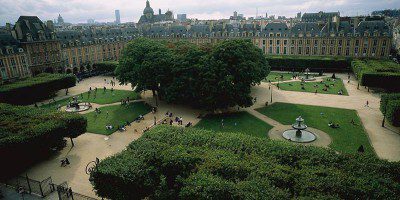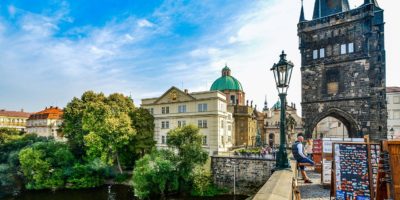
Dubrovnik, Sponza’s_palace by Hedwig Storch – Wikimedia Commons
Top 10 Amazing Facts about Sponza Palace
The Sponza Palace, also called Divona, is a palace from the 16th Century. The palace’s construction was completed in 1522. This majestic palace is located in Dubrovnik, a city on the Adriatic Sea in the region of Dalmatia, in the southeastern semi-exclave of Croatia.
The name Sponza is derived from the Latin word “Spongia” which means a spot where rainwater was collected. It was constructed originally to serve as a customs house. However, over the years the palace has taken up a variety of roles.
Today, Sponza is considered by many as Dubrovnik and Croatia’s most important historical documentation. Its beautiful architecture and deep-rooted history make it a very formidable and attractive tourist attraction site.
This article will look into some amazing facts about the beautiful Sponza Palace.
1. Constructed by Paskoje Miličević Mihov
Paskoje Miličević Mihov was a local builder from Croatia who live between 1440 and 1520. Mihov, alongside the Andrijic brothers, were active participants in the drawing and designing plans for Dubrovnik. Dubrovnik was known as the Republic of Ragusa back then.
Between 1516 and 1522, Mihov built the rectangular-shaped Sponza Palace. He is also credited with designing the two bridges to the Revelin Fortress, the Dubrovnik Dominican Monastery, and a mint in Dubrovnik.
2. The Palace Is Built Using a Mixture of Two Medieval Architecture Styles

Sponza Palace Court Yard by Sailko – Wikimedia Commons
The Sponza Palace is a rectangular building with an inner courtyard. The building was constructed using a combination of two architectural styles. That is the Gothic and Renaissance styles.
Gothic (pointed) architecture was succeeded by Renaissance architecture. Therefore, it makes sense that the two were mixed since the palace was constructed in what can be considered the transition period.
Sponza Palace features an arched atrium (central courtyard) and an external loggia.
3. The Andrijić brothers designed the Loggia and Sculptures
The Andrijic brothers were considered master stoneworkers. The most famous of these brothers was Petar Andrijić. Their most significant works other than the Sponza Palace are the votive church of St. Saviour and the Salt pans in Ston.
The Palace is adorned by sculptures done by the Andrijic brothers. The brothers were also responsible for designing the palace’s loggia. A loggia is a covered exterior gallery/corridor usually found in either the upper or ground level of a building.
4. It Survived a Major Earthquake

Sponza Palace and bell tower by Marcin Konsek – Wikimedia Commons
One of the compliments paid to Sponza Palace is its strength and structural intelligence. This is mostly due to the fact that it survived one of the largest earthquakes in Croatia and Dubrovnik’s history.
In 1667, Dubrovnik was hit by a catastrophic earthquake. It is one of the three most devastating earthquakes to hit what is now modern Croatia in the last 2,400 years. Most of the city was destroyed by the quake and over 3000 people died as a result.
The Sponza Palace was able to stand strong and withstand the quake avoiding destruction unlike most of the city. Sponza preserved state affairs within its offices and might have prevented a crisis for the republic.
5. Sponza Palace Has Served Many Purposes
Sponza Palace was initially designed as a customs office and bonded warehouse. In its earlier years, the palace was referred to as ‘Divona’ from the Croatian word for customs, ‘dogana’.
Later, the majestic building took up different roles and functions, however. It was used as a mint, an armory, a treasury, a bank, and even as a school in different periods of its history.
The palace evolved into the Republic of Ragusa’s (Dubrovnik’s) intellectual hub. This was after the founding of the Academia dei Concordi, a 16th-century literary academy.
Members of the academy, which was established by a group of poets, convened in the sizable first-floor hall. At the same time, a commerce hub where businesspeople gathered was located in the palace atrium.
6. A Unique and Renowned Wedding Venue

Wedding Venue by mykonoswedding from Pixabay
The ideal Dubrovnik wedding location is this grand 16th-century palace with its tasteful fusion of Gothic and Renaissance styles. It is one of Dubrovnik’s most exquisite palaces and is located right in the center of Old Town.
Its elaborate portico, atrium, and facade evoke lacework cut from white stone. The Dubrovnik archives are currently housed in Sponza Palace, which is also a must-have location for the city’s elite cultural events.
This is one of the special wedding locations in Dubrovnik that is both charming and appropriate for royalty, along with the Rector’s Palace.
7. Sponza Palace Hosts Dubrovnik Summer Festival’s Opening Ceremony
The Dubrovnik Summer Festival is an annual event held in Dubrovnik Croatia. Instituted in 1950, the ceremony is held between July 10th and August 25th.
During the festival, a rich program of dances, theatre, opera, and classical music is presented in various venues in Dubrovnik. The festival’s opening ceremony is always held at Sponza Palace in a grand event to kick off all celebrations and events the festival entails. Sponza Palace is also used as a performance venue during the festival and for other authorized and official performances.
8. Sponza Palace Is Home to The City Archives

Document archives by Sandra Verrecas from Pixabay
The city archives are presently housed in the palace. The 1st and 2nd floors house the State Archives, a priceless collection of manuscripts.
These archives contain records that date back to the 12th century, with the earliest manuscript being dated 1022. Previously, the Rector’s palace housed these files, which included more than 7000 volumes of manuscripts and nearly 100,000 individual manuscripts.
9. The Atrium Was a Market Place
An atrium is a large open-air space that is surrounded by a building. The atrium surrounded by Sponza Palace used to serve as a marketplace and meeting place.
This is proven by an inscription that can be found on an arch at the palace. The inscription reads Fallere nostra vetant et falli pondera. Meque pondero cum merces ponderat ipse deus. This directly translates to: “Our weights do not permit cheating. When I measure goods, God measures with me.”
10. Sponza’s Atrium Has A 3d Computer Graphics Model
The atrium is also the basis of a 3D computer graphics model. Titled “Sponza Atrium”, the model was created for a rendering contest. It is now a widely used reference model for global illumination rendering.
Planning a trip to Paris ? Get ready !
These are Amazon’s best-selling travel products that you may need for coming to Paris.
Bookstore
- The best travel book : Rick Steves – Paris 2023 – Learn more here
- Fodor’s Paris 2024 – Learn more here
Travel Gear
- Venture Pal Lightweight Backpack – Learn more here
- Samsonite Winfield 2 28″ Luggage – Learn more here
- Swig Savvy’s Stainless Steel Insulated Water Bottle – Learn more here
Check Amazon’s best-seller list for the most popular travel accessories. We sometimes read this list just to find out what new travel products people are buying.











